World’s First Purpose-Built Carrier: the Hōshō

The United States Navy remains the largest operator of aircraft carriers in the world with 11 nuclear-powered flattops now in service. China’s People’s Liberation Army Navy (PLAN) has made a great leap forward with its naval aviation in the past decade and a half, worrying U.S. officials and lawmakers.
Beijing’s efforts were jumpstarted twice; first in the 1980s when it purchased the decommissioned HMAS Melbourne from Australia as scrap — yet still made sure to gather useful information — and then when it acquired the partially completed Soviet Navy carrier Varyag from Ukraine in the late 1990s.
That warship was refurbished as the Type 001 Liaoning, becoming China’s first operational aircraft carrier when it entered service in 2012. Since then, China has domestically built two carriers, with the second one now undergoing sea trials.
More recently, alarm bells also were signaled in February when another potential U.S. adversary announced it had begun carrier operations. The Iranian Islamic Republic Guard Corp’s Shahid Bahman Bagherican can only operate with helicopters and unmanned aerial vehicles (UAVs) rather than manned fixed-wing fighters, but the warship will greatly enhance the IRGC’s naval capabilities. Even as it lacks the endurance of the U.S. Navy’s true carriers and even the smaller amphibious assault ships (which are in essence mini-conventionally powered carriers), Iran still has a de facto carrier.
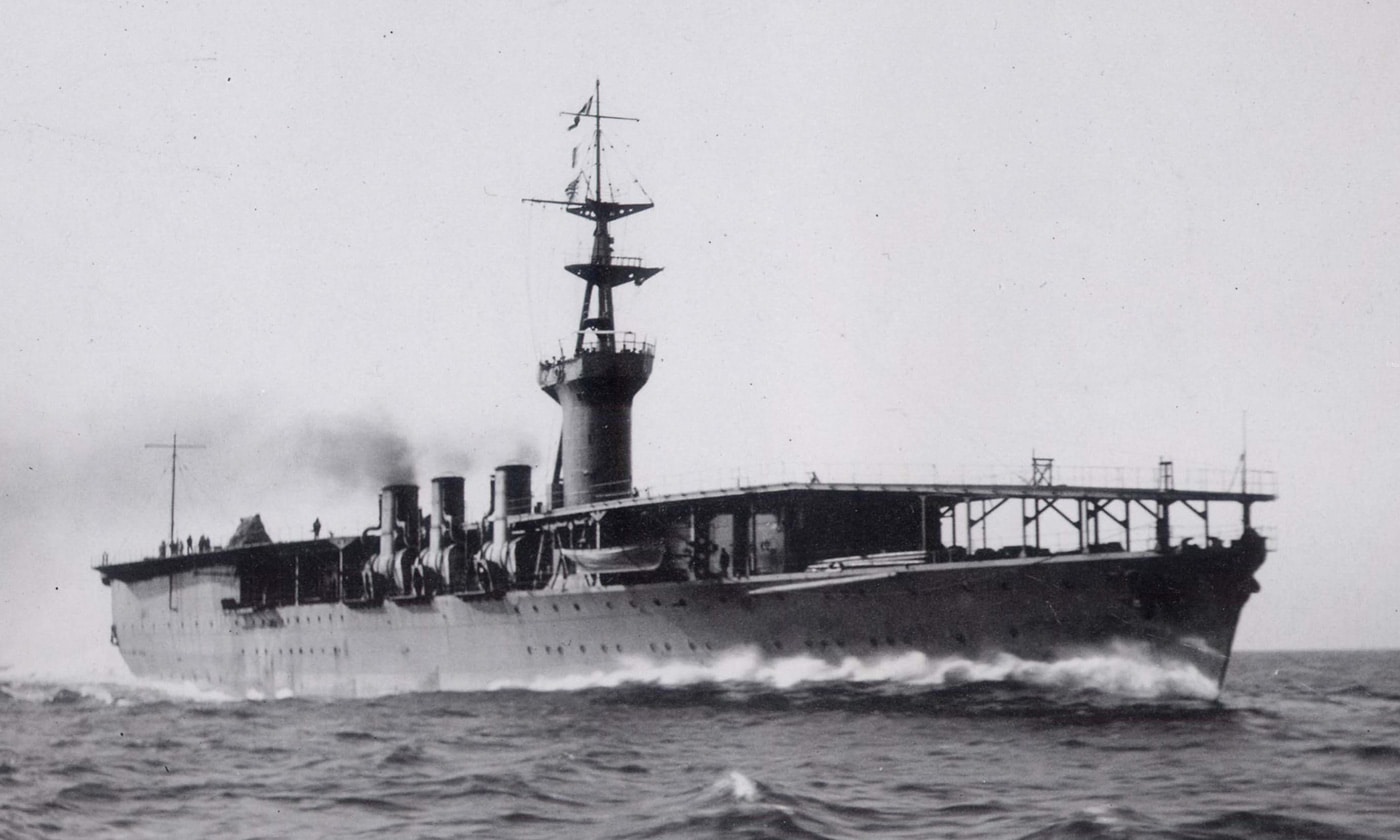
More importantly, it was a low-cost solution for a nation that doesn’t have the deep pockets of the U.S., China or other carrier operating nations like the UK and France. Another key point is that, unlike China or India, which purchased “second-hand” carriers to bolster their respective programs, Tehran went in another direction.
It converted a cargo carrier into a flat top. While that has earned scrutiny from some armchair admirals, it needs to be remembered that a century ago, the U.S. Navy’s first carrier — USS Langley (CV-1) — was converted from the collier USS Jupiter (Navy Fleet Collier No. 3).
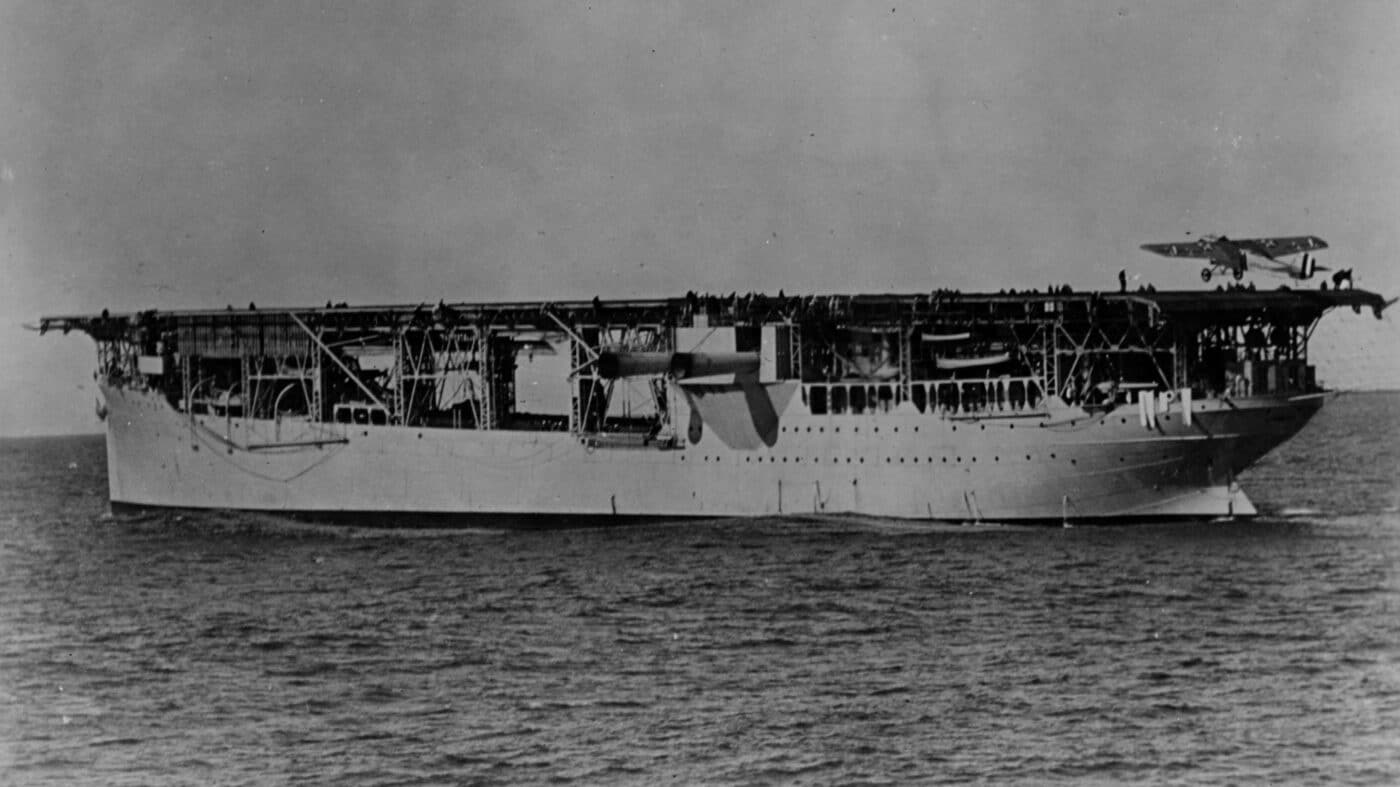
Likewise, the UK’s Royal Navy carrier HMS Furious was converted from a Courageous-class battlecruiser, while HMS Argus was converted from an ocean liner that was under construction during the First World War. That was followed by HMS Eagle, which had been laid down as the Almirante Cochrane, a battleship originally intended for Chile, before being converted to a carrier.
The story of the first true “purpose-built” carrier only began just as World War I was ending.
Rising Like a Phoenix
Being an island nation, Japan can trace its naval heritage back centuries, and there are records of various clans fighting battles involving hundreds and perhaps even more than 1,000 warships as early as the 12th century. The Battle of Dan-no-ura, fought in the Shimonoseki Strait off the main island of Honshu, is believed to have seen at least 1,200 ships engaged — though period accounts suggest it could have involved thousands of vessels.
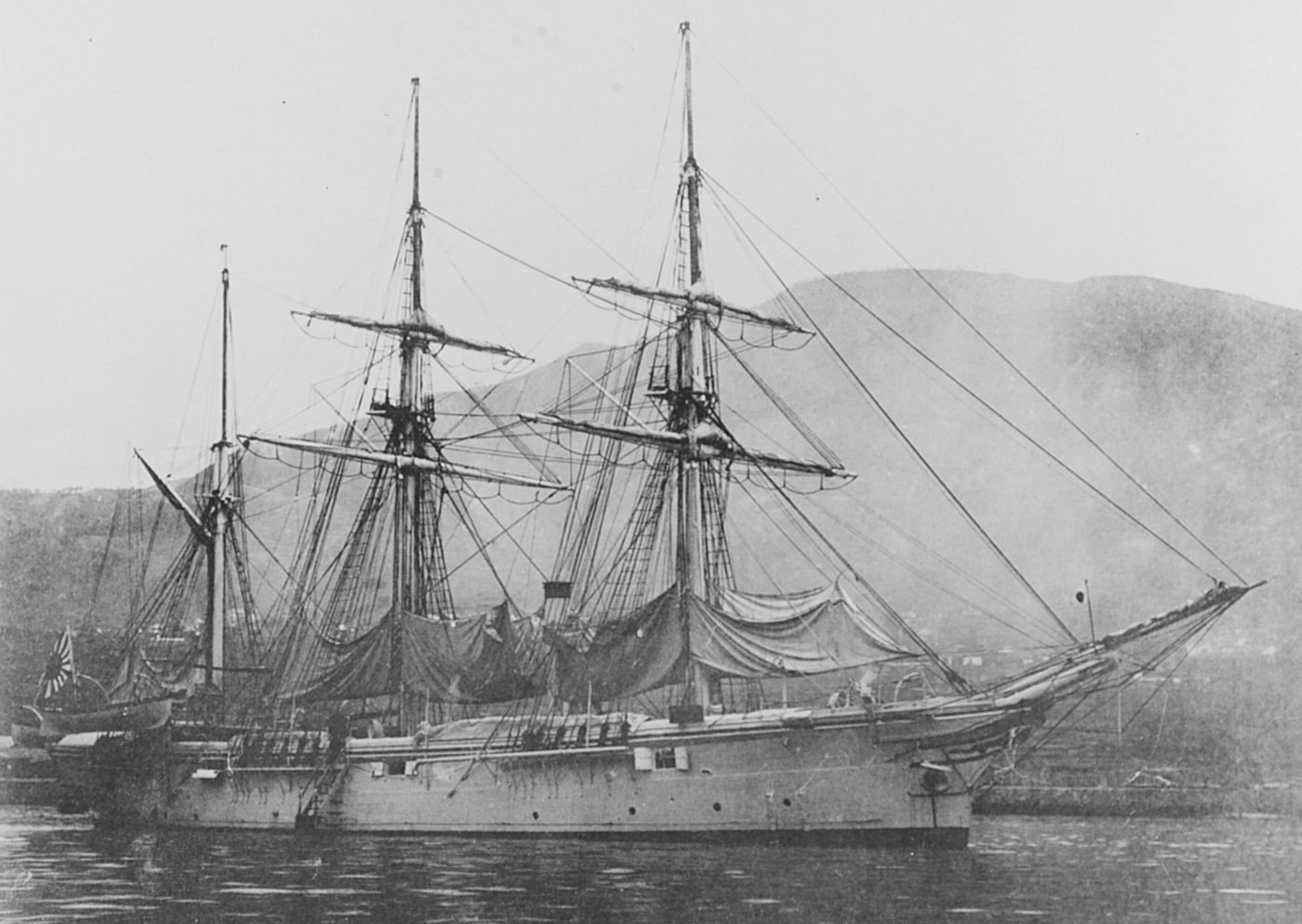
During the late Tokugawa shogunate, Japan began to build Western-style warships. Yet, it was after the Meiji Restoration that brought the final demise of the Tokugawa shogunate in 1867 that the island nation rapidly became a naval power. The Imperial Japanese Navy was established in July 1869, but in less than 30 years it saw the first of its major victories.
Modeled after the UK’s Royal Navy, the IJN played a critical role in 1895 against China, and then in 1905 against Russia. After the Russo-Japanese War, the IJN aimed to build a fleet consisting of eight modern battleships and eight modern armored cruisers — to gain parity with the major powers, including the United States. In 1918, the National Diet (Japan’s government body that could make laws) authorized money for the construction of an “eight-six fleet.”
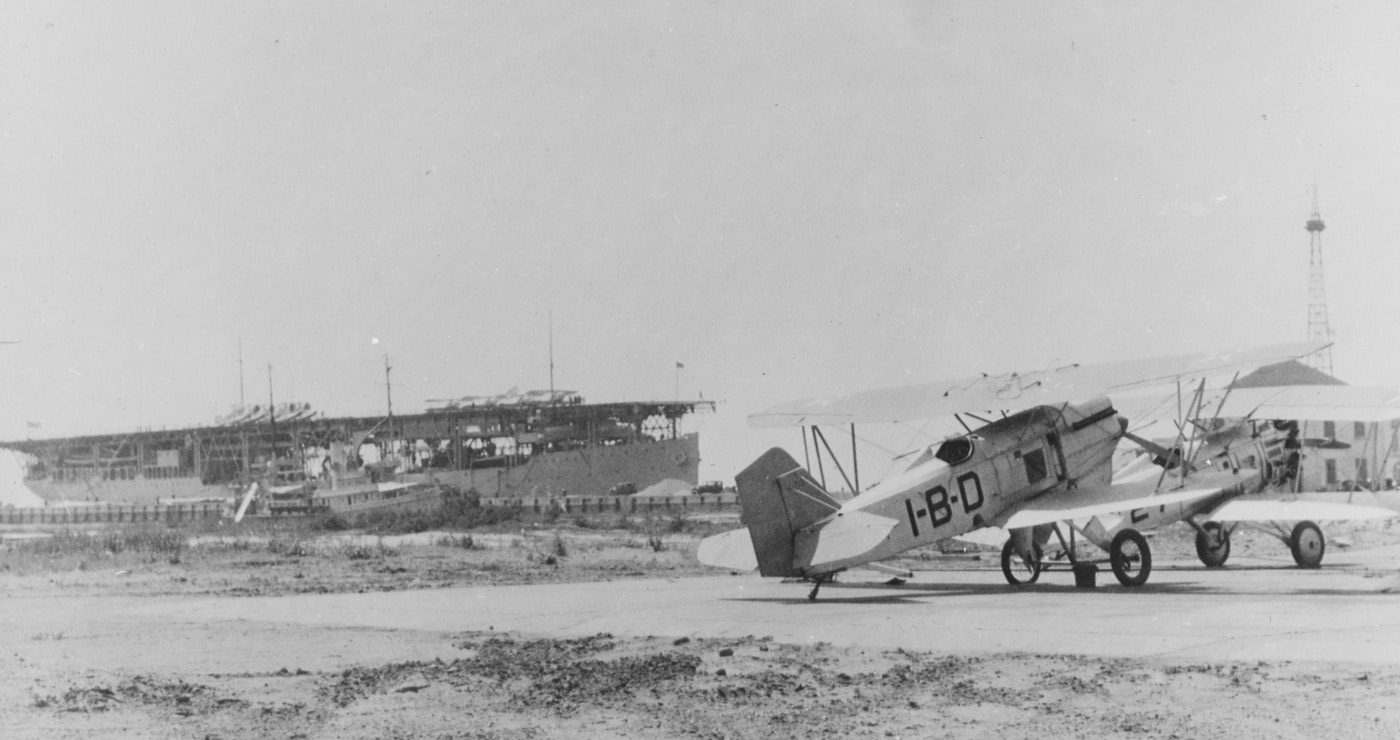
Soon after, construction was to begin on a tanker named Hiryu, but Tokyo noted the conversion of HMS Furious and HMS Argus. The Japanese high command requisitioned the ship and, with British aid, moved forward with a new plan — to build a carrier.
The Royal Navy had already laid down the keel for HMS Hermes, which was the first purpose-built carrier to be designed. On December 16, the keel was laid down for the Japanese warship, which was redesignated Hōshō, which literally translated to “Phoenix Flying.” It was at least the second warship to bear that name following a Japanese gunboat from the late 19th century, but certainly the most famous one.
Japan Won the Naval Arms Race
It would be wrong to suggest that London and Tokyo were engaged in any sort of arms race in the early 1920s, and the IJN still looked to the Royal Navy as a guide, which it had been modeled after since its founding. Nor was there any race to launch the first purpose-built carrier.
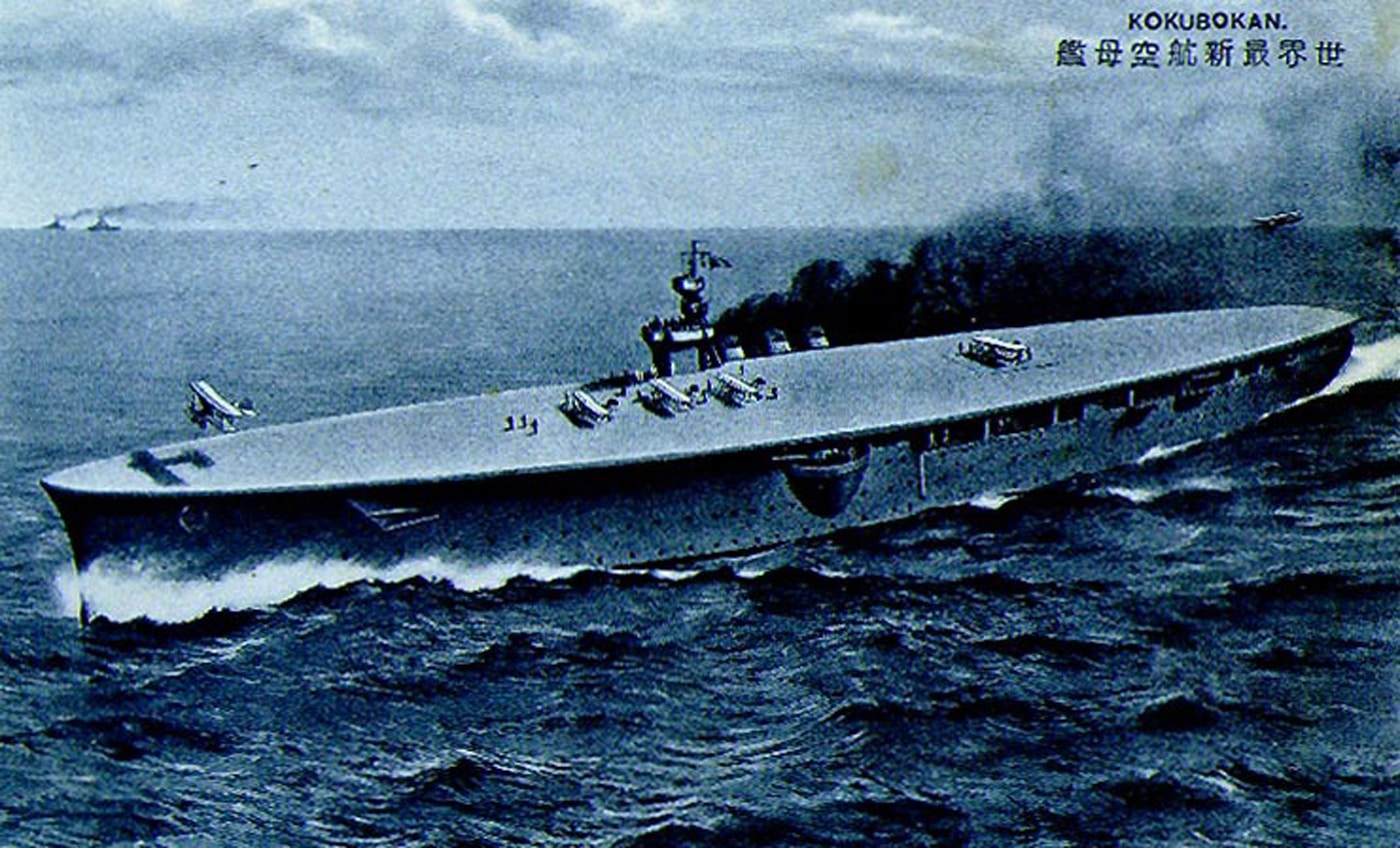
Despite the head start the British had, Hōshō was launched and commissioned first. The reason is that the Armstrong Whitworth shipyard that was building HMS Hermes was closed and work was suspended. The Royal Navy was already operating multiple converted carriers and opted to make design changes that came from lessons learned — while the British faced material and labor shortages coming out of the First World War.
A True “Flattop”
Hōshō was also revised after Japanese observers monitored construction of Hermes. While it was originally envisioned to be a seaplane carrier, it was redesigned with a full-length flight deck. In that form, the warship had an overall length of 552 feet (168.25 meters) and a beam of 59 feet (18 meters), displacing 7,590 tons (7,470 long tons) at standard load or 9,646 tons (9,494 long tons) under normal load. It was powered by eight small-tube boilers, which gave the carrier a top speed of 25 knots — while it had a range of more than 8,600 nautical miles.
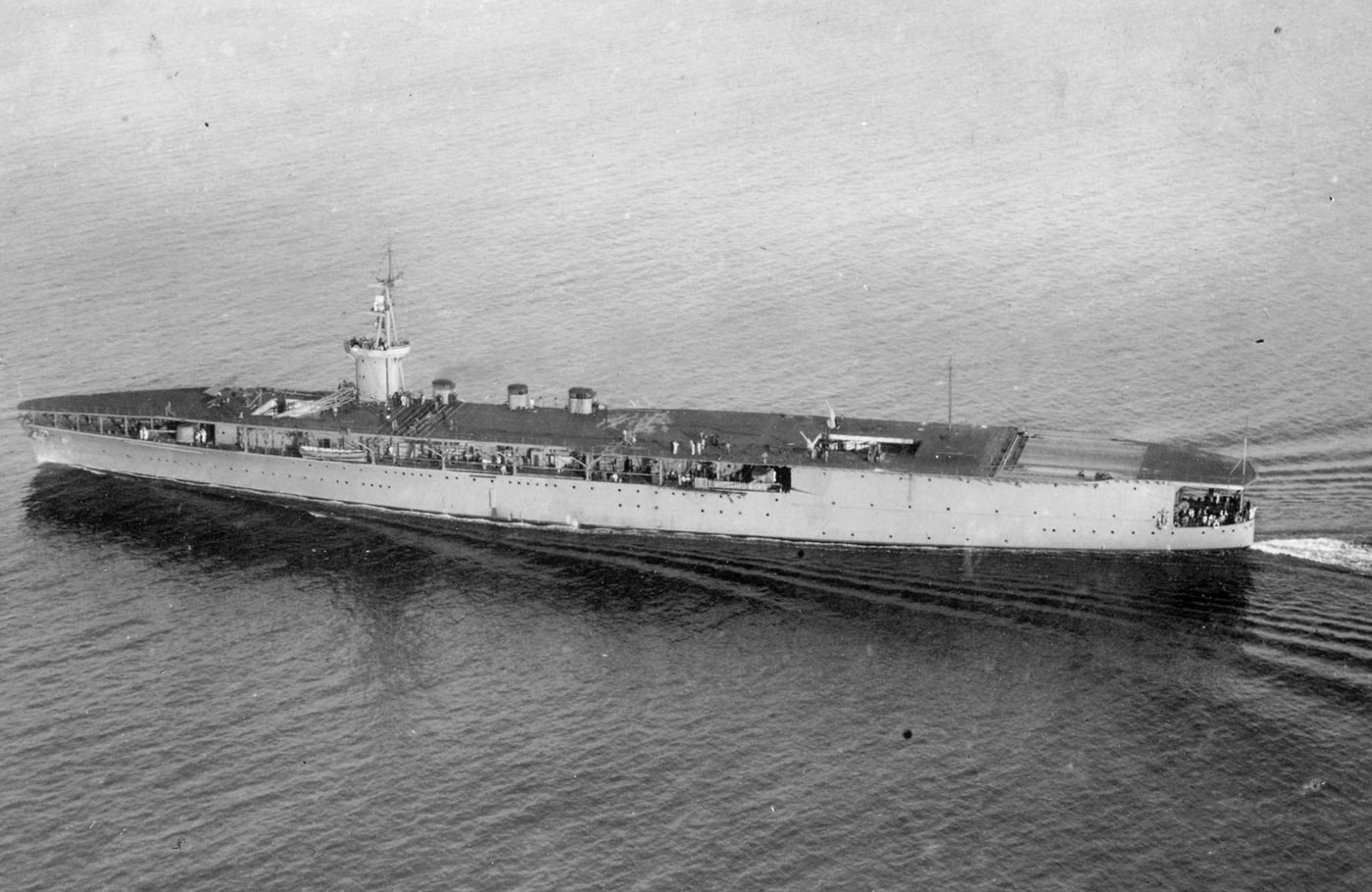
The Japanese carrier was originally outfitted with a small command tower, but that, along with a crane, was subsequently removed to avoid any obstruction on the flight deck, while the tower was also very cramped. Control of flight operations was moved to a platform to the side of the flight deck.
The carrier’s three funnels protruded to the starboard side, and could be swiveled so that smoke would not interfere with the launch or recovery of aircraft. It was truly a “flattop” in the literal sense.
Though innovative for the era, the vessel was still primitive in its design. There was no catapult, and the narrow flight deck could only accommodate a few aircraft. Its airwing typically consisted of 15 fighters, originally the Mitsubishi 1MF1, which was a biplane fighter designed by the UK’s Herbert Smith (who designed the Sopwith Camel among other aircraft).
The ship had a complement of 512 officers and sailors. Armament initially consisted of four 5.5-inch guns and eight 25mm guns, and that was increased to 12 13.2mm guns in 1941 and 30 25mm guns in 1944 after her last refit.
Commissioned in late December 1922, the IJN carrier was primarily employed as a testbed — much like the U.S. Navy’s USS Langley — but it allowed Japan to develop its naval aviation capabilities.
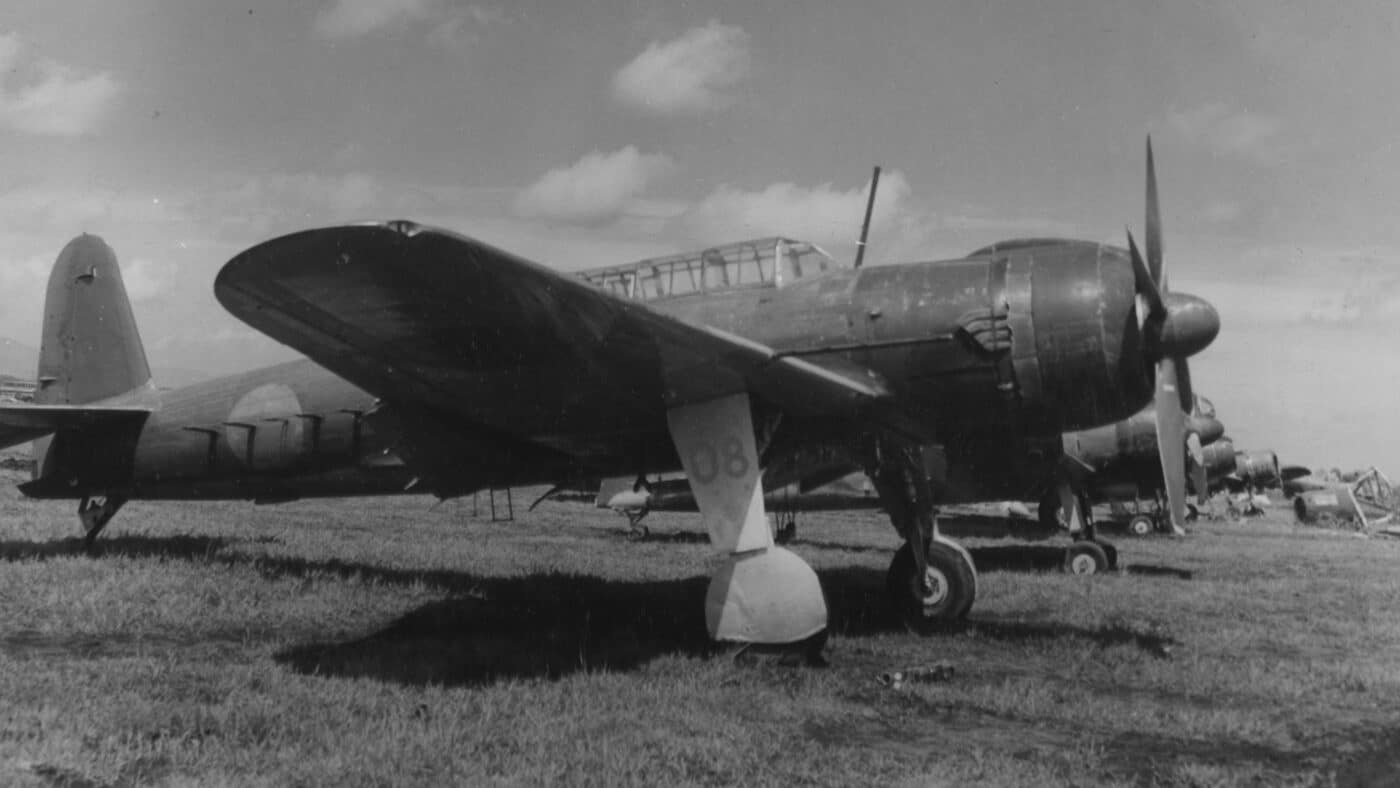
The basic design of the first purpose-built carrier, including the lack of a large island, served as a prototype and it went on to influence the IJN’s Akagi, Kaga and Ryūjō. Unlike those carriers to come, Hōshō had almost no armor. Yet, while those three aforementioned IJN carriers were all sunk by the end of the Second World War, the ship that came first actually survived the conflict — despite seeing action at both Pearl Harbor and Midway, albeit in secondary roles.
Career of the Hōshō
It was nearly a decade after Hōshō entered service that it was first deployed to a combat operation, taking part in the Shanghai Incident that began in 1932. As part of the IJN’s Third Fleet, the carrier arrived at the Yangtze River at the beginning of February of that year.
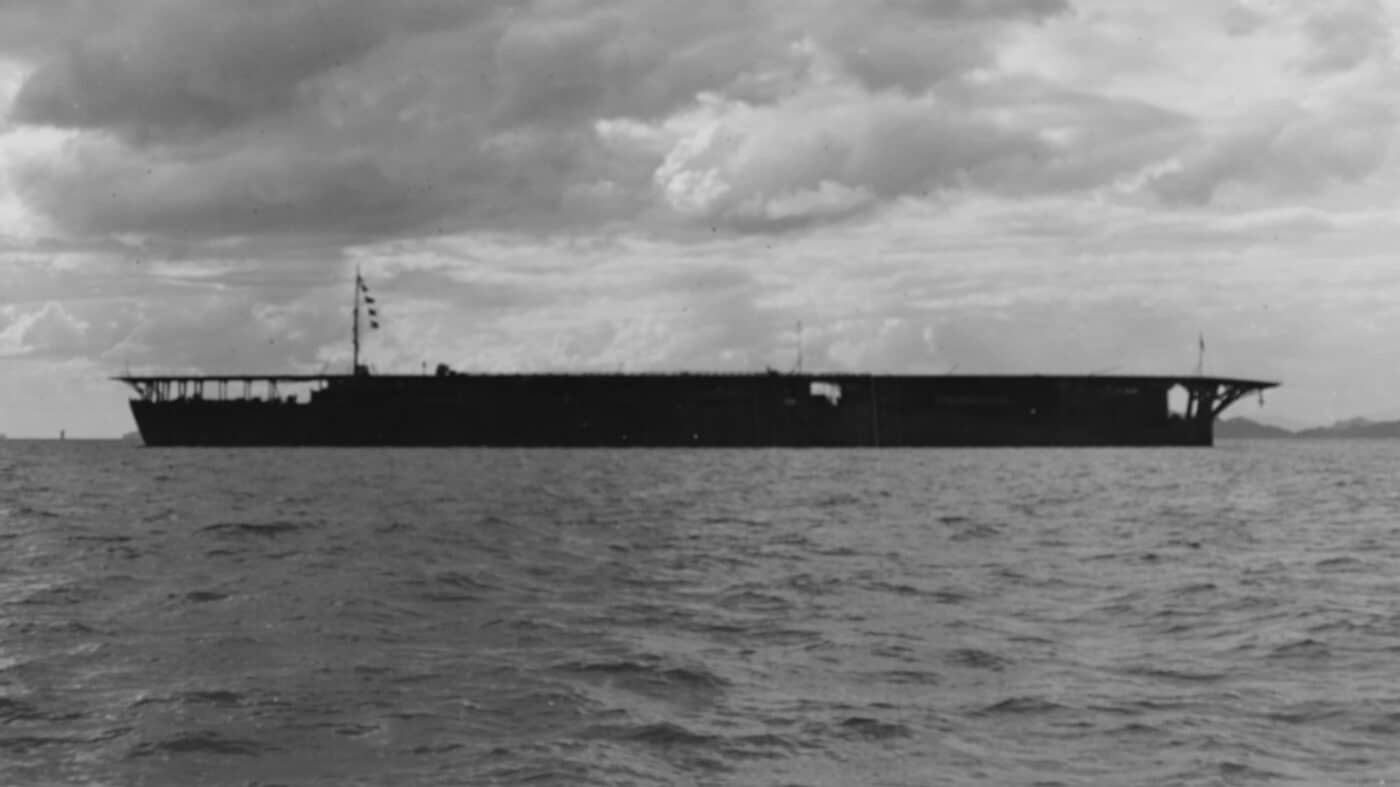
Aircraft from Hōshō took part in the IJN’s first aerial combat on February 5, 1932. A total of five IJN aircraft, including three fighters and two attack planes, engaged nine Chinese fighters over the coastal city of Shanghai. Though only one Chinese fighter was damaged and none shot down, it marked the first time IJN aircraft took part in combat with an enemy’s warbirds.
Days later, the carrier sortied fighters in a ground attack mission at the Kunda Airfield, supporting the Imperial Japanese Army. Flight operations from the carrier continued for the next month, until a ceasefire was declared.
Refits
Following a refit that was required after the warship was caught in an early fall typhoon in 1935, Hōshō was assigned again to the third fleet in 1937 and took part in the Sino-Japanese War –during which time aircraft operating from the flight deck engaged Chinese planes on multiple occasions.
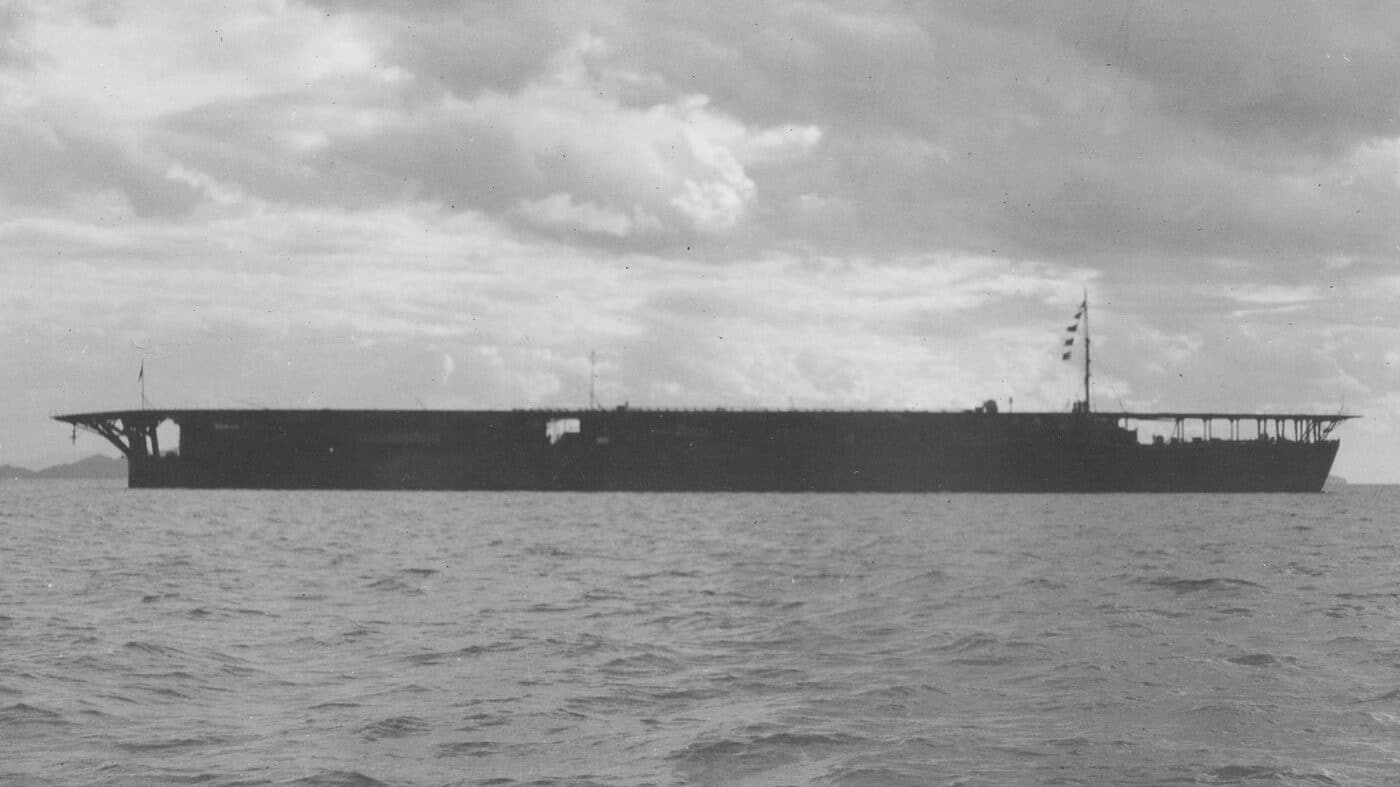
As previously noted, Hōshō was among the IJN flotilla that carried out the December 7, 1941, attack on Pearl Harbor. While its aircraft didn’t take part in the actual raid on the U.S. Navy’s warships, the fighter wing provided cover for the carrier force. The Japanese warship played a similar role during the Battle of Midway in June 1942. It was wisely kept from frontline action as its aircraft consisted of eight bi-plane Yokosuka B4Y “Jean” torpedo bombers that were already considered antiquated. For the remainder of 1942 and 1943, the vessel served primarily as a training carrier.
The flattop underwent a final modernization in 1944, and during the refit saw its flight deck lengthened by nearly 20 feet. After being returned to service, Hōshō remained in the home waters but operated with the newer and far more capable Nakajima B6N “Jill” and the Yokosuka D4Y “Judy” bombers.
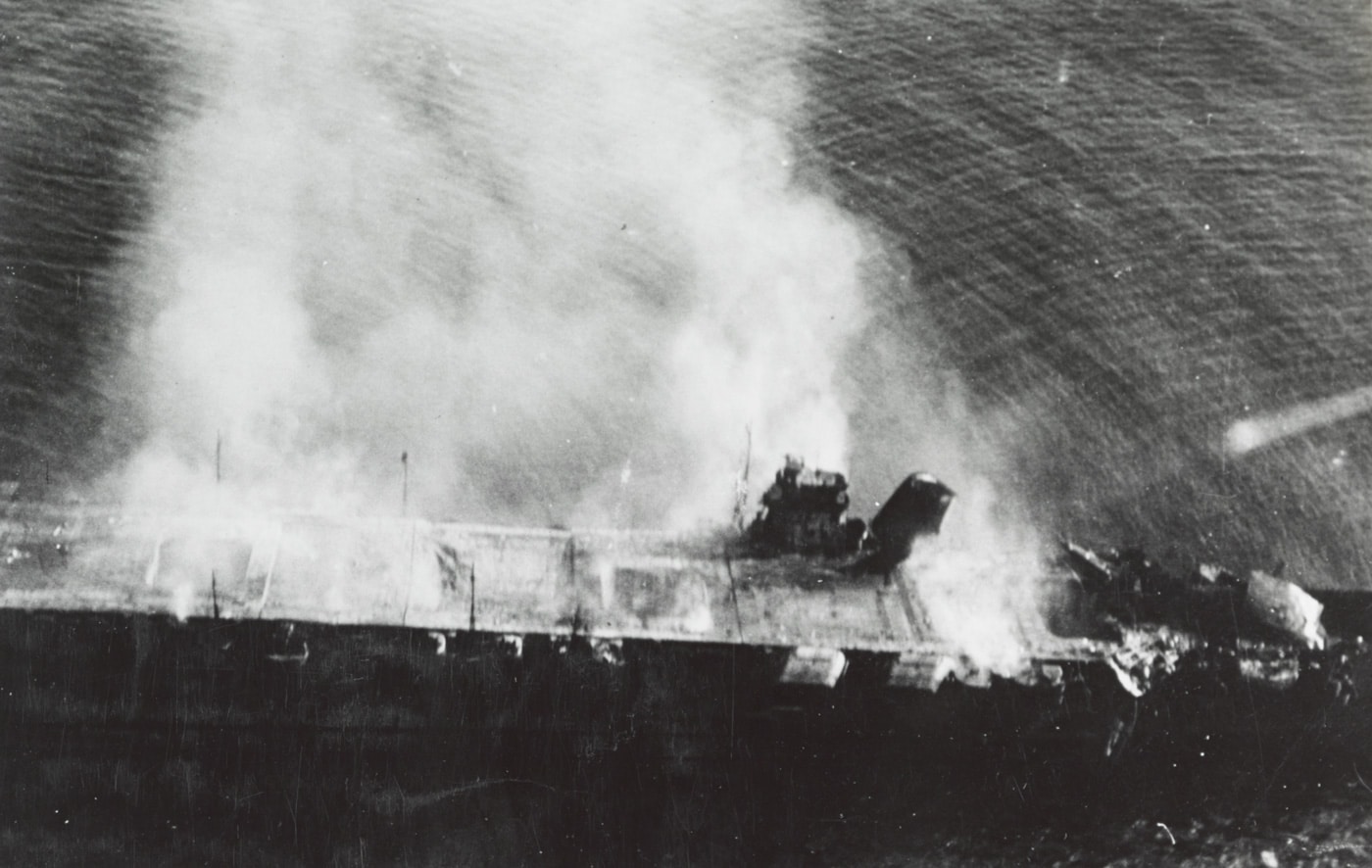
In March 1945, while berthed at Kure in southeastern Japan, Hōshō came under attack from U.S. aircraft, during which multiple bombs hit the flight deck. Though emergency repairs were made, the ship remained camouflaged and moored off the coast. Damaged again in late July of that same year in another U.S. air raid, it was the last combat the vessel would see.
Conclusion
Following the formal surrender of the Japanese on September 2, 1945, the IJN’s first carrier was stricken from the navy list. The flattop’s final role was that of a repatriation transport returning home those Japanese military personnel and civilians stationed overseas. The hangar was transformed to provide additional berths, and the repatriation missions continued until August 1946, with scrapping efforts beginning just a month later — thus ending the career of the first purpose-built aircraft carrier.
Editor’s Note: Please be sure to check out The Armory Life Forum, where you can comment about our daily articles, as well as just talk guns and gear. Click the “Go To Forum Thread” link below to jump in and discuss this article and much more!
Join the Discussion
Read the full article here







